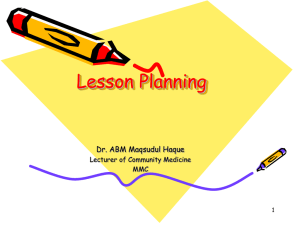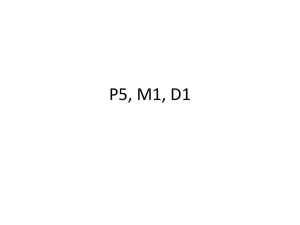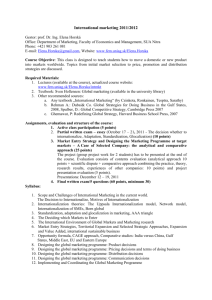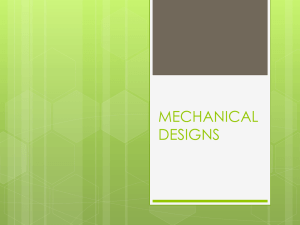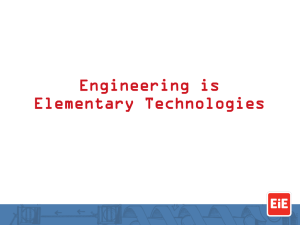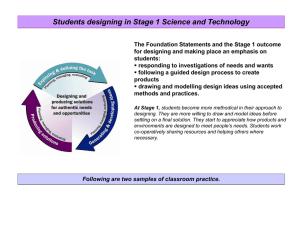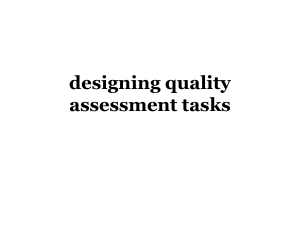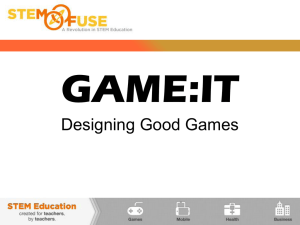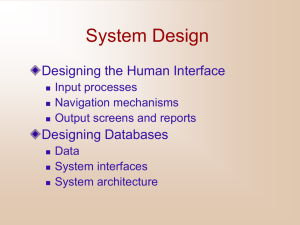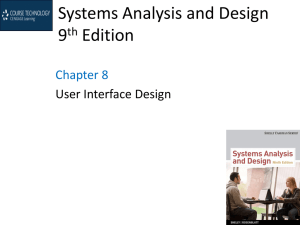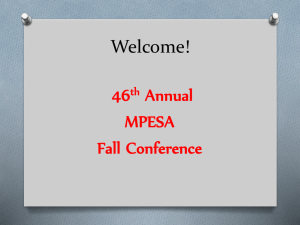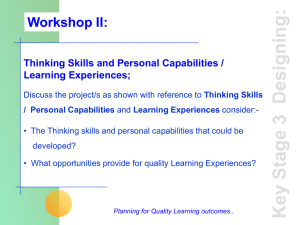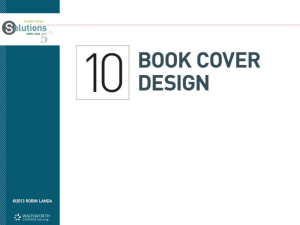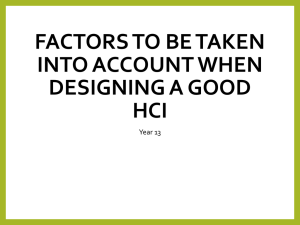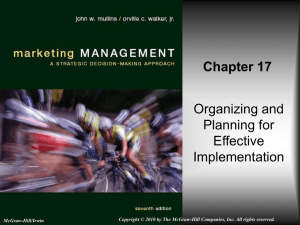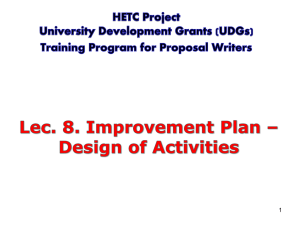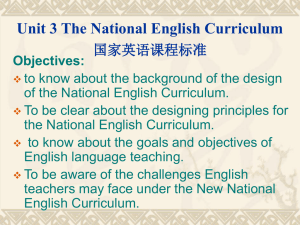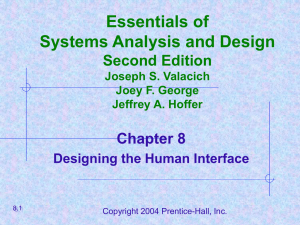We*ve Got Our Assessment Results * Now What?!
advertisement
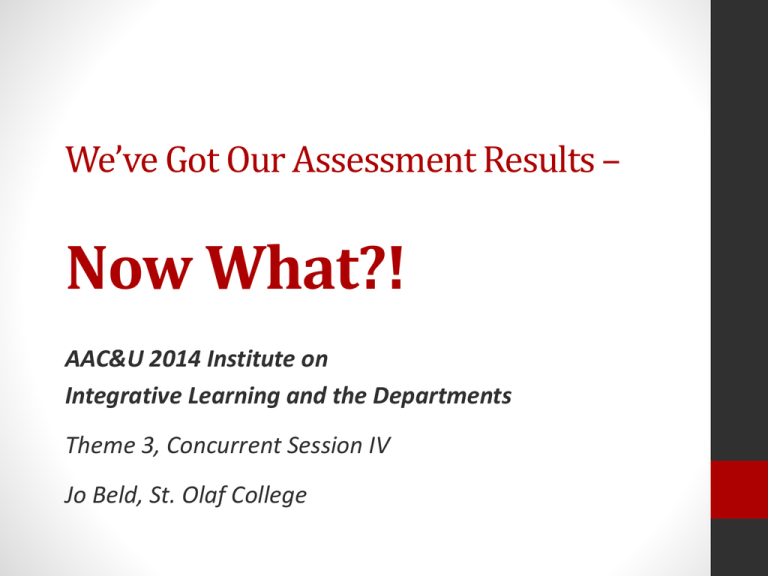
We’ve Got Our Assessment Results – Now What?! AAC&U 2014 Institute on Integrative Learning and the Departments Theme 3, Concurrent Session IV Jo Beld, St. Olaf College Session agenda • Why using assessment data is important • Why using assessment data is hard • Using what you’ve already got • Designing for use in the future • Building a culture of assessment use Why use is important Assessment use is: • Required by accreditors (all of them!) • Engaging for faculty • Engaging for other stakeholders • A means of stewardship • A means of improvement Why use is hard • Institutions are not “rational actors” • Your colleagues are busy • Your colleagues are smart • Data feels distant • Data can be ambiguous and short-lived • Use requires collaboration Why use is hard • Which obstacle to using assessment is especially salient for your institution? Are there other obstacles we haven’t mentioned? Using what you’ve already got • Take stock • Triangulate Using what you’ve already got Internationalization at St. Olaf Using what you’ve already got Inventory of: • Intended learning outcomes referencing internationalization/global understanding (institutional, GE, program-level) • Institutional-level assessment data (NSSE, HEDS-Alumni, local Learning Goals survey) • GE assessment data (analysis of student work in selected GE-accredited courses) • Program-level assessment data (Study Abroad Learning Assessment, results from selected majors and concentrations) Using what you’ve already got Think about the project you are working on at this Institute. • What data do you already have that might be relevant? If you don’t know, where would you go to find out? • What questions do you want to answer? • Who can pull that data together for you so you can look for patterns? Using what you’ve already got • Task a group and/or tweak a routine • Tell a story Using what you’ve already got Inst Research & Evaluation Board Academic Affairs Provost and Dean’s Council Early fall review of assessment findings from previous spring Assessment Subcomm Curriculum Committee Using what you’ve already got Think about the project you are working on at this Institute. Group(s)? Routine? Story? Designing for use in the future Backward design in assessment • Anticipate uses • Ask for use • Affirm successes • Allow time Designing for use: Anticipate Designing for use: Anticipate Intended uses by GE instructors (pp. 6-7): Promoting reflection Enhancing alignment Revising content/pedagogy Improving other courses Supporting tenure/promotion Designing for use: Anticipate Intended uses by departments, offices, and committees Determining whether curriculum needs revising Guiding faculty development Informing department GE course offerings Enhancing advising Informing Dean’s Council decisions Supporting grant applications Designing for use: Ask Assessment Action Reports Dean of the College Curriculum Committee Institutional Research & Evaluation What uses have you made in the past? What potential uses guided your current assessment project? What use will you make of your current results? What help or support do you need for this use? Designing for use: Affirm Use = Sustain as well as change Designing for use: Allow time Multi-year assessment schedule • One program type per year • One outcome per program • One year to reflect and act instead of gather Building a culture of use Cite assessment findings yourself Ask others to cite findings Make assessment part of a larger project people are invested in Link resource allocation to assessment engagement and use Building a culture of use • Which of these strategies would you like to try? • Are there other strategies that have worked for you? • Are there new ones you’d like to suggest? • Take stock • Triangulate • Task a group or tweak a routine • Tell a story ************ • • • • Anticipate uses Ask for use Affirm continuities Allow time We’ve Got Our Assessment Results – Now What?! Share your “a-ha” moments!




